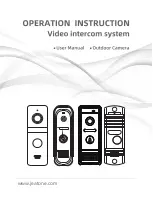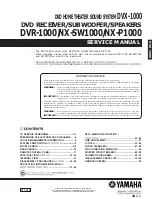
Manual del Usuario
/ SF series /
User’s Manual
M10x50
2 x AX-SF3
M10 Washer
DIN7380
DIN9021
Part Reference: 30006744
34
To perform any operations related to flying the system, read the present document first, and act on the
warnings and advice given.
The goal is to allow the user to become familiar with the mechanical elements required to fly the acoustic
system, as well as the safety measures to be taken during set-up and teardown.
Only experienced installers with adequate knowledge of the equipment and local safety regulations
should fly speaker boxes.
It is the user's responsibility to ensure that the systems to be flown (including flying accessories) comply
with state and local regulations.
The working load limits in this manual are the results of tests by independent laboratories. It is the user's
responsibility to stay within safe limits. It is the user's responsibility to follow and comply with safety factors,
resistance values, periodical supervisions and warnings given in this manual.
Product improvement by means
of research and development is on
going at DAS Audio Group, S.L.
Specifications are subject to change
without notice.
It is common practice to apply
5:1 safety factors for enclosures and
static elements.
For slings and elements exposed
to material fatigue due to friction
and load variation the following
ratios must be met; 5:1 for steel
cable slings, 4:1 for steel chain
slings and 7:1 polyester slings.
Thus, an element with a
breaking load limit of 1000 kg may
be statically loaded with 200 kg (5:1
safety factor) and dynamically
loaded with 142 Kg (7:1 safety
factor).
The load capacity, of each lift
motor, should be correspond to a
safety factor of 10:1.
When flying a system, the
working load must be lower than the
resistance of each individual flying
point in the enclosure, as well as
each box.
Hanging hardware should be
regularly inspected and suspect
units replaced if in doubt.
This is important to avoid injury
and absolutely no risks should be
taken in this respect. It is highly
recommended that you implement
an inspection and maintenance
program on flying elements,
including reports to be filled out by
the personnel that will carry out the
inspections.
Local regulations may exist that,
in case of accident, may require you
to present evidence of inspection
reports and corrective actions after
defects were found.









































